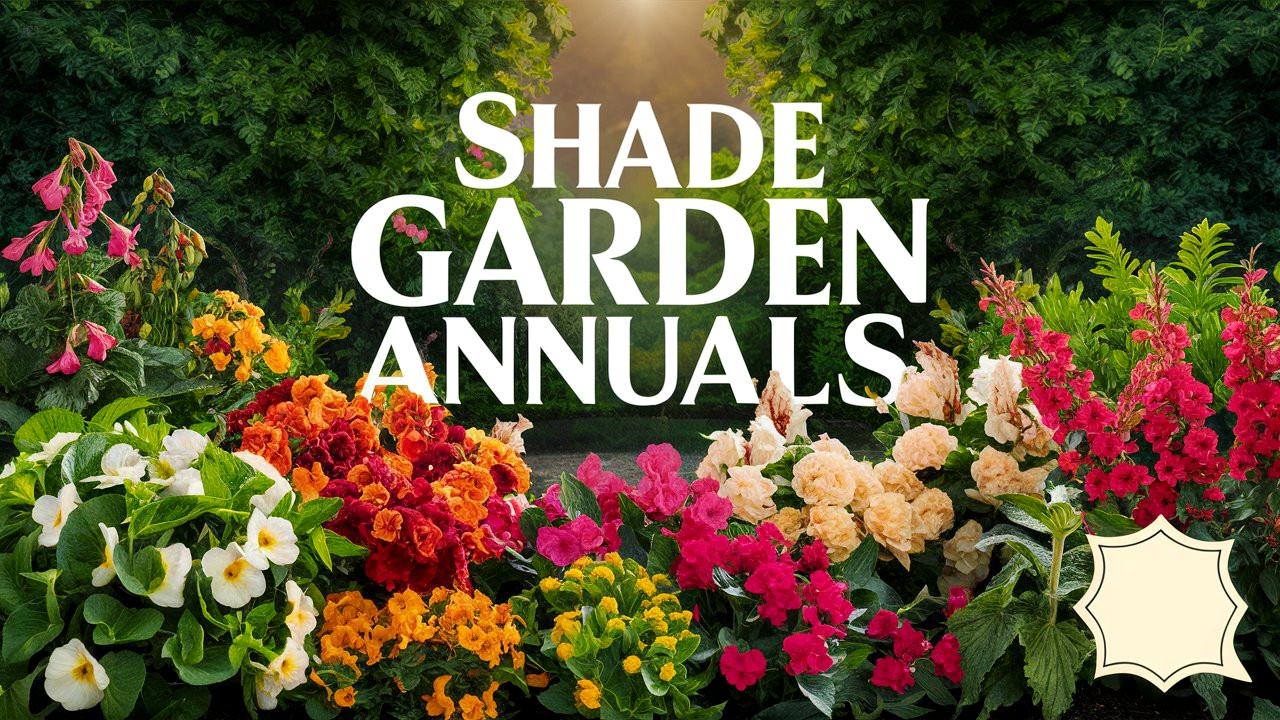Creating a beautiful shade garden can sometimes feel daunting, particularly when you realize that not all plants thrive in low-light conditions. The good news is that there are many stunning annuals that not only tolerate but also flourish in shaded areas.
In this guide, we’ll explore a range of shade-loving annuals that can bring color, texture, and vibrancy to your garden, even in those challenging spots that rarely see direct sunlight. Let’s dive into these delightful plants and discover how they can enhance your shaded spaces.
Purple Heart (Tradescantia pallida)
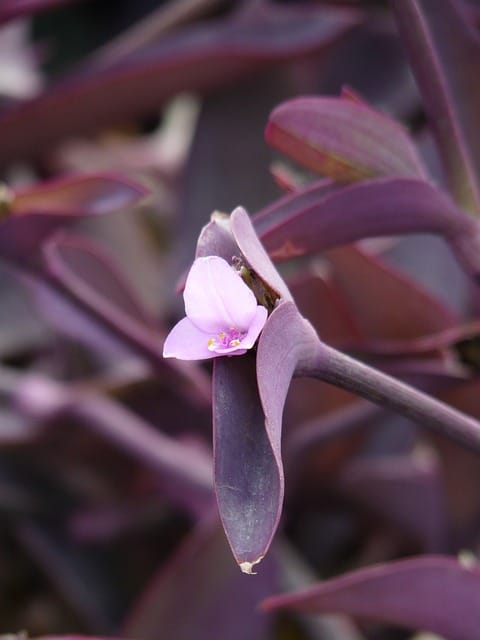
Starting our exploration of shade-loving annuals, we uncover Purple Heart. also known as Wandering Jew. This magnificent plant is celebrated not just for its name, but for its striking deep purple foliage that can brighten even the shadiest of spots. As it spreads, it creates a trailing effect, perfect for hanging baskets or as a ground cover in shady areas.
Purple Heart is known for its resilience and adaptability, making it an excellent choice for beginners. It thrives best in well-drained soil, and while it prefers partial to full shade, it can tolerate some sun if you gradually expose it to brighter light. Regular trimming encourages bushier growth and keeps the plant in check. Purple Heart is also relatively low maintenance, requiring only moderate watering, allowing your gardening experience to remain enjoyable rather than overwhelming.
Snapdragons
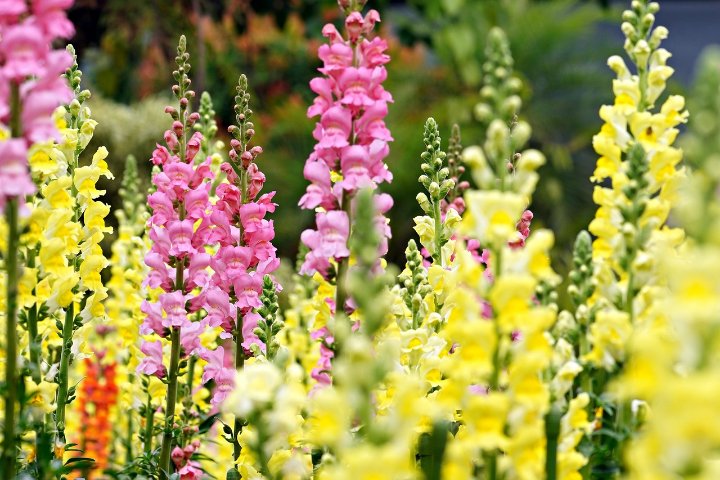
Snapdragons, with their unique bloom structure resembling the jaws of a dragon, are a fantastic option for bringing vertical interest to shady areas. These beautiful flowers come in a variety of colors, making them versatile for any garden design. Although they typically prefer full sun, certain snapdragon varieties can effectively flourish in partial shade, especially in warmer climates where the afternoon sun can be harsh.
When planting snapdragons, aim for rich, well-drained soil and ensure they are spaced adequately for airflow. These annuals benefit from regular deadheading, which promotes extended blooming throughout the season. Their upright growth habit makes them ideal for planting in the background of garden beds or alongside taller shade-tolerant perennials, providing a delightful burst of color from spring through fall.
Polka Dot Plant
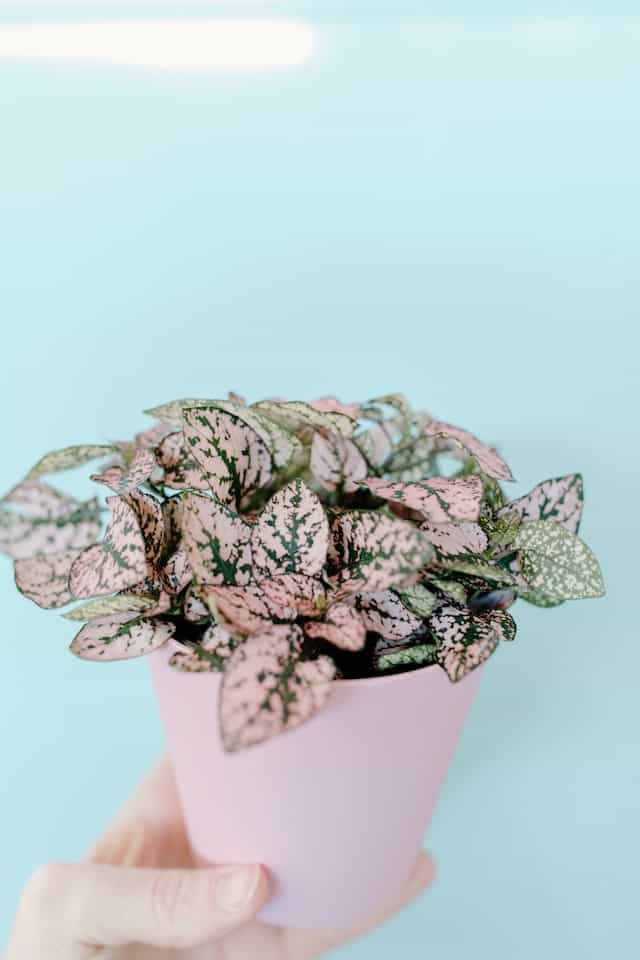
Add a splash of whimsy to your shade garden with the Polka Dot Plant (Hypoestes phyllostachya). True to its name, this plant is characterized by its charming foliage speckled with pink, white, or red spots against a lush green backdrop. Best suited for partial shade, the polka dot plant thrives in areas that receive filtered light, avoiding the harsh afternoon rays.
One of the delightful aspects of the Polka Dot Plant is its versatility; it can be grown in containers, hanging baskets, or directly in the ground. As a member of the Acanthaceae family, it does require consistently moist soil to prevent wilting. To maintain its appearance, regular pruning is essential to encourage bushier growth; without it, the plants may become leggy.
Nasturtium
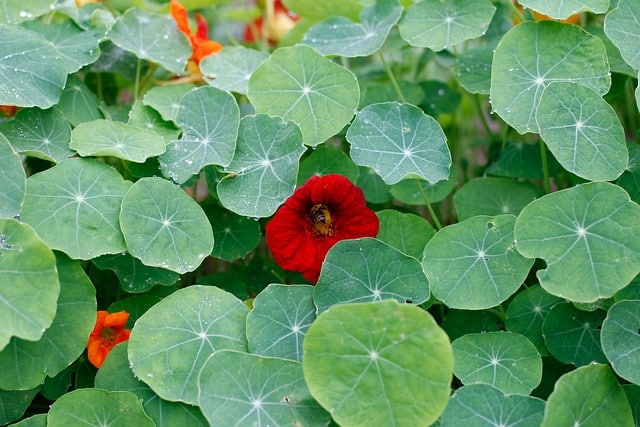
Brighten up your shade garden with the cheerful blooms of Nasturtium (Tropaeolum majus). Known for their vibrant orange, yellow, and red flowers, these annuals not only bring color but also attract pollinators, adding life and movement to your shaded spaces. Though they typically prefer full sun, nasturtiums can thrive in lighter shade, especially during the hottest parts of summer.
These plants are known for their unique, rounded leaves and edible flowers, which can add a peppery kick to salads. Nasturtiums grow well in poor soil, making them easy to cultivate. Their trailing vines can be used to spill over containers or climb trellises, creating a whimsical, natural aesthetic. With minimal maintenance and the ability to deter pests in your garden, nasturtiums are an excellent addition to any shade garden.
Forget-Me-Not
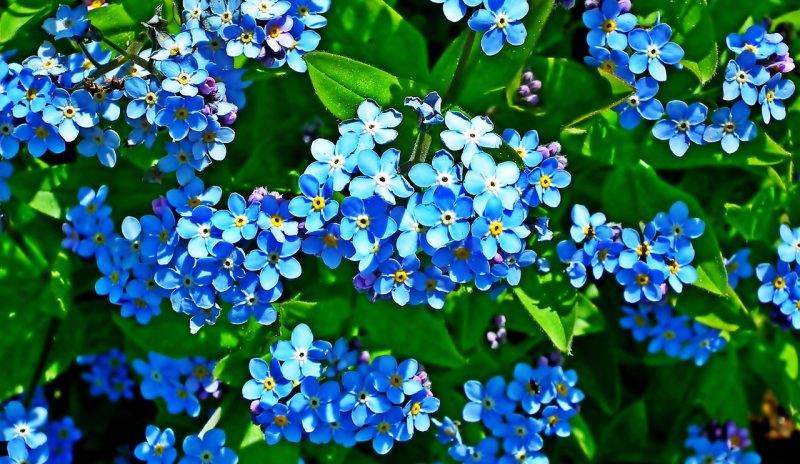
Reminiscent of a gentle spring breeze, Forget-Me-Not (Myosotis sylvatica) is a charming annual that creates a carpet of delicate blue flowers in shaded areas. These plants are particularly popular for their sentimental associations and are often seen as a symbol of remembrance. Forget-me-nots can flourish in both full sun and partial shade, but their performance in shade is remarkable, providing color and life where many other flowers might fail.
These whimsical flowers prefer moist, well-drained soil and will naturalize over time, making lovely ground covers if left unchecked. They can self-seed, so they may come back year after year! Regular watering is necessary, especially during dry spells, and once blooming is complete, cut back the foliage to encourage new growth.
Floss Flower (Ageratum)
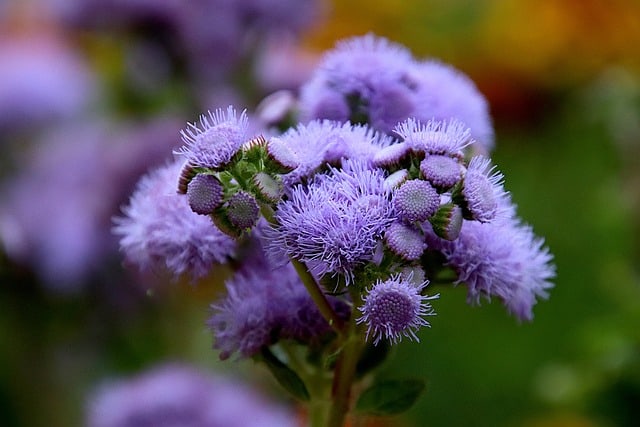
The Floss Flower, scientifically known as Ageratum houstonianum, is a splendid addition to any shade garden. These flowers bloom in vivid shades of blue, purple, or white, creating a soft, airy feel in shaded beds. Ageratum prefers cooler temperatures and can thrive in partial or full shade, making them consistent performers in less than sunny areas.
These plants are relatively low-maintenance and only require regular watering during dry periods. They appreciate rich, well-drained soil, but can adapt to a variety of conditions. They will bloom from late spring until the first frost, making them a long-lasting choice for shaded gardens. Their compact nature also makes them excellent for edging or container arrangements, providing both color and texture.
Calibrachoa
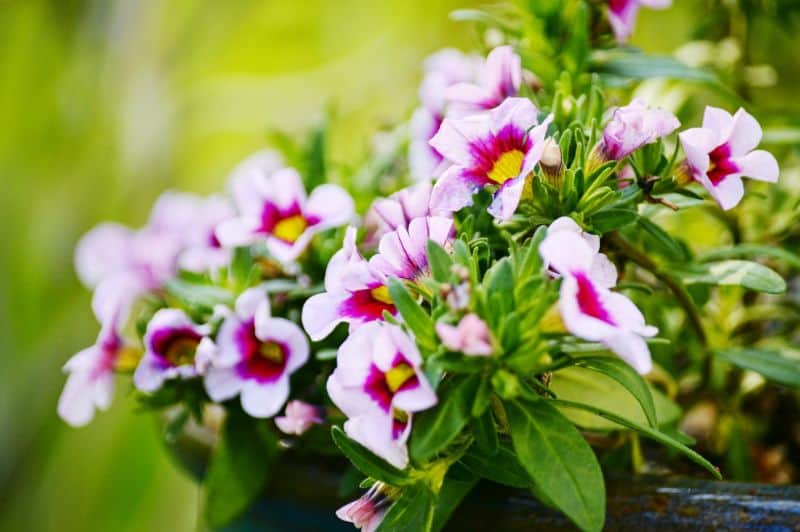
An elegant choice for containers and hanging baskets, Calibrachoa is also known as “million bells” due to its profuse blooming habit. These small, petunia-like flowers come in various colors, including vibrant pinks, yellows, and blues, making them a favorite for gardeners looking to add life to shaded areas. While they thrive best in full sun, certain cultivars can tolerate partial shade and still produce stunning displays.
Calibrachoa prefers well-drained potting mix if grown in containers and should be watered regularly to keep the soil moist but not soggy. Fertilizing every few weeks with a balanced fertilizer encourages more blooms throughout the growing season. With their cascading habit, they work beautifully in hanging containers, providing a lush, colorful aesthetic in shaded nooks.
Begonia
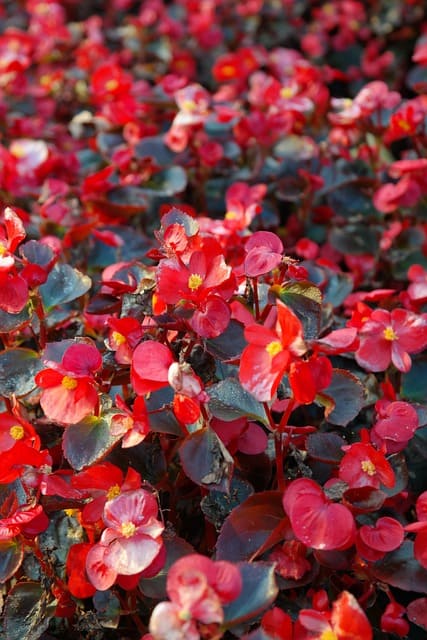
Begonias are celebrated as some of the best performers in shade gardens, making them a go-to choice for beginners. With their diverse forms, colors, and textures, these plants can easily fill your garden with visual interest. From the spectacular flowering varieties like Begonia x tuberhybrida to the stunning foliage types, the options are nearly endless!
Most begonias prefer partial to full shade and thrive in well-drained, moist soil. They require consistent watering to keep their vibrant foliage healthy. Some varieties, such as the Wax Begonia, are particularly tolerant, making them suitable for beginners. Add begonias to containers, hanging baskets, or flower beds, knowing they’ll establish a captivating presence in any shade.
Sweet Potato Vine
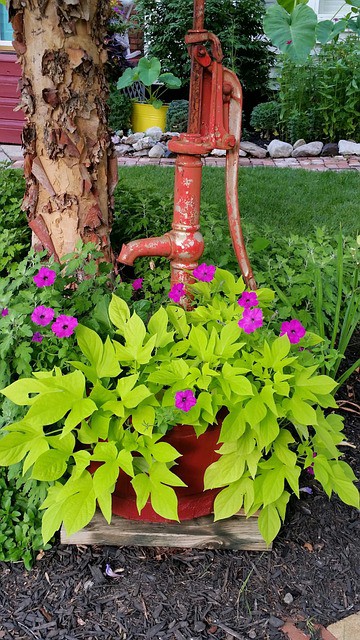
Known for its trajectory growth and striking foliage, the Sweet Potato Vine (Ipomoea batatas) is a fantastic annual that brings lushness and color to shade gardens. Available in a variety of colors, including deep purple and bright chartreuse, they work wonderfully as a trailing component, providing a dramatic effect in containers and hanging arrangements.
These plants prefer well-drained soil and a bit of moisture but are forgiving if you occasionally neglect them. They can tolerate a range of conditions, including partial shade. Sweet Potato Vines are truly versatile, serving both functional and aesthetic purposes in your garden. They give height and texture while bringing an organic feel to your floral arrangements.
Torenia
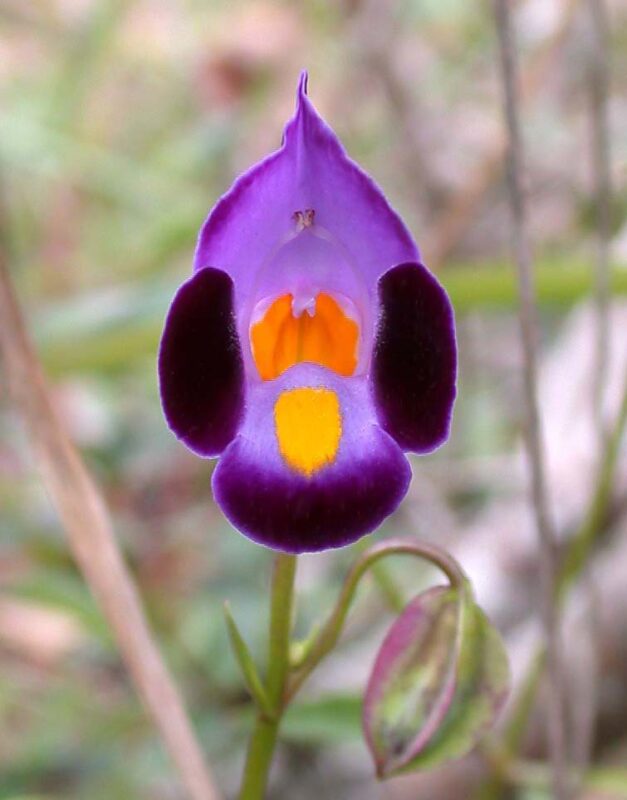
Torenia, commonly referred to as “wishbone flower,” is a delightful annual that thrives in shade, boasting beautiful bell-shaped blossoms in a variety of hues, including blue, purple, and white. This tender annual prefers partial to full shade, making it a wonderful companion for other shade-loving plants.
Torenia’s unique blooms attract pollinators and can produce flowers continuously from spring until the first frost if cared for properly. Regular watering and rich soil will help them thrive. Their cascading growth habit makes them ideal for containers, providing a cascade of colorful blooms and lush greenery.
Coleus
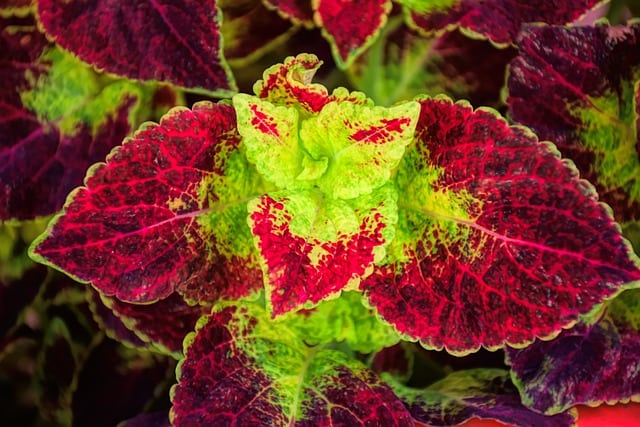
One of the easiest ways to incorporate stunning visual appeal into any shade garden is through Coleus (Solenostemon scutellarioides). Coleus plants are coveted for their vibrant, multi-colored foliage, which varies widely in shades and patterns. They thrive in partial to full shade, making them a preferable choice for dimly lit areas.
Known for their ease of care, coleus plants require well-draining soil and consistent moisture. They do best in humid environments, so keeping the soil adequately watered is essential. Regular pinching back encourages bushier growth and maintains their size and shape. Plant them in beds, borders, or containers for a truly eye-catching display that will last throughout the growing season.
Dichondra
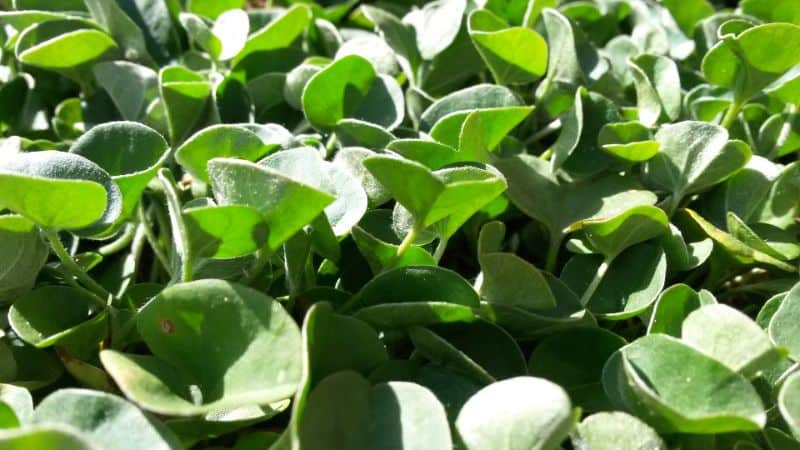
Dichondra, particularly Dichondra repens or “silver falls,” is a fantastic low-growing ground cover that thrives in shade. With its silvery-green leaves and trailing habit, it makes an excellent option for filling shaded corners or spilling over the edges of containers. The delicate heart-shaped leaves create a soft, lush carpet beneath taller blooming plants.
This versatile plant prefers well-drained soil and moderate moisture levels. It can tolerate a range of soil types, enhancing its adaptability. Dichondra can also be used as a filler plant in more extensive garden designs, offering contrast to bolder foliage and flowers. Whether used as a ground cover or in hanging baskets, it brings an effortless elegance to shaded areas.
Stock (Matthiola incana)
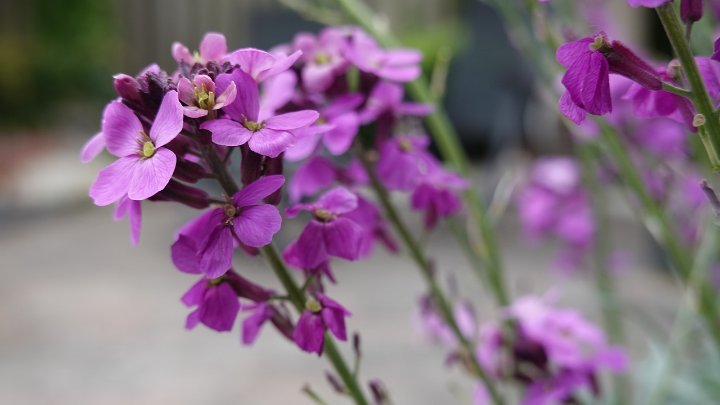
The Stock flower is renowned for its stunning clusters of blooms and sweet fragrance, providing a delightful touch to any shade garden. While it generally prefers full sun, Stock can tolerate some shade, particularly in hotter climates, making it suitable for partial shade areas.
Stock thrives in well-drained, rich soil and benefits from regular waterings. Deadheading spent blooms encourages continuous flowering throughout the season, ensuring your garden remains colorful and fragrant. Their upright growth habit makes them ideal for background planting, while the colorful blossoms offer a lovely contrast to broader foliage.
Impatiens
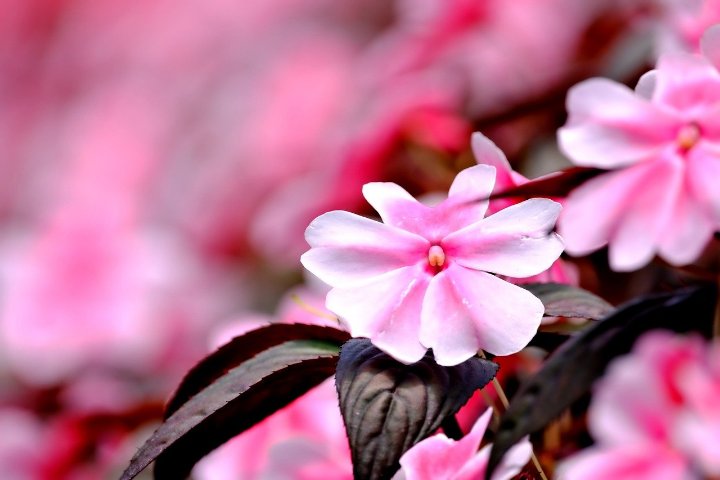
Perhaps one of the most well-known shade annuals, Impatiens are a top choice for beginner gardeners. These stunning flowers come in various colors and forms, making them a staple for adding color to shady spaces. Impatiens prefer shaded locations, particularly in warm climates, where direct sunlight can scorch their leaves.
These plants thrive in consistently moist soil, requiring regular watering to keep them hydrated. They are generally low-maintenance, simply offering occasional pruning or pinching back to encourage fuller growth. Impatiens thrive beautifully in containers, mixed plantings, or as part of bedding designs, providing consistent blooms all summer long.
Browallia
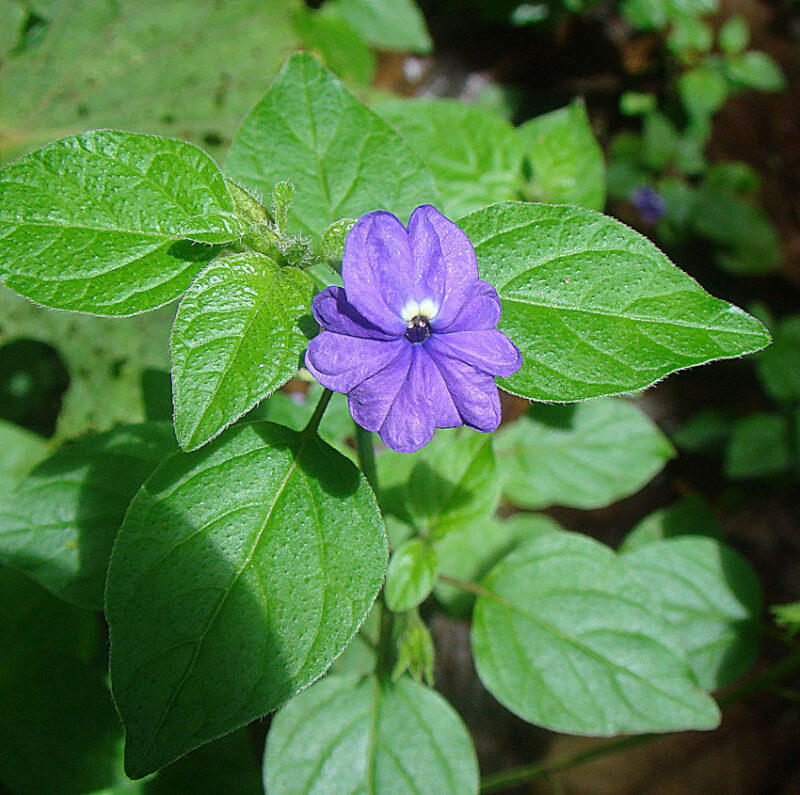
Browallia is a delightful flower that brings striking blue and purple blooms to shade gardens, creating a vibrant display in areas that might feel lackluster. This plant prefers partial shade and can also tolerate full shade, making it an ideal choice for those darker spots in the garden.
Browallia likes rich, well-draining soil and moist conditions. Regular pinching promotes bushier growth and more blooms, ensuring a long-lasting floral display for the entirety of the growing season. These annuals are versatile and adapt well to containers, window boxes, or as part of garden beds alongside other shade-loving plants, contributing a vibrant hue and exciting texture.
Lobelia
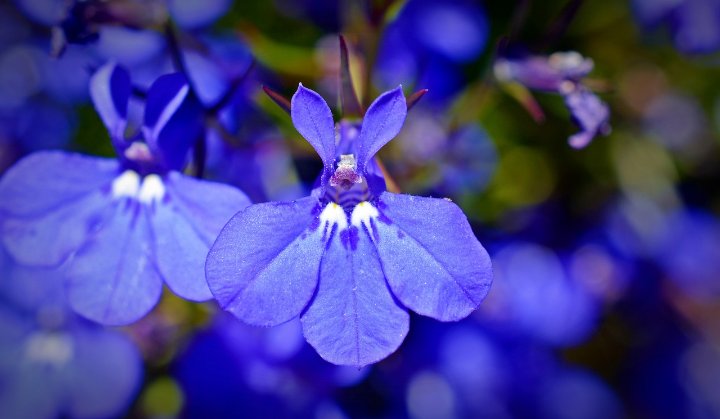
Known for its cascading habit, Lobelia is an excellent choice for trailing over the edges of containers or hanging baskets in your shade garden. Available in shades of blue, purple, and white, lobelia creates a stunning visual display in shaded areas. These compact plants do well in partial shade, allowing their vibrant blooms to shine.
Regular watering is essential to maintain the health and lushness of lobelia while ensuring the soil remains well-drained. Deadheading spent blooms will encourage continuous flowering, and their delicate blossoms attract pollinators, adding life to your shaded haven. Their low height makes them perfect for containers or as border plants in your garden design.
Caladium
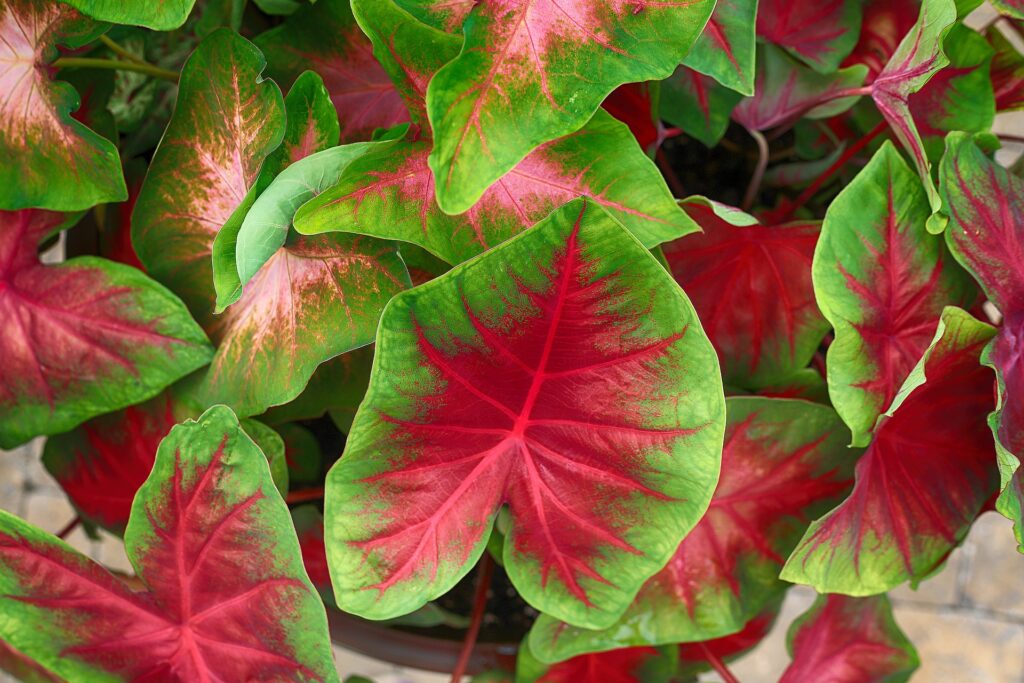
For colorful foliage that instantly brightens your shade garden, look no further than Caladium. These plants are celebrated for their spectacular leaves, which come in vibrant combinations of green, pink, white, and red and can create a stunning display in shadier areas. Caladiums thrive in moist, well-drained soil and prefer partial to full shade, making them perfect for those challenging spots.
Regular watering and a bit of fertilization throughout the growing season will help keep your Caladiums vibrant. These plants can provide height and color variation in your garden, working splendidly in mixed plantings or containers. Their dramatic leaf shapes and colors contribute immensely to the overall ambiance of your shaded retreats.
Nemesia
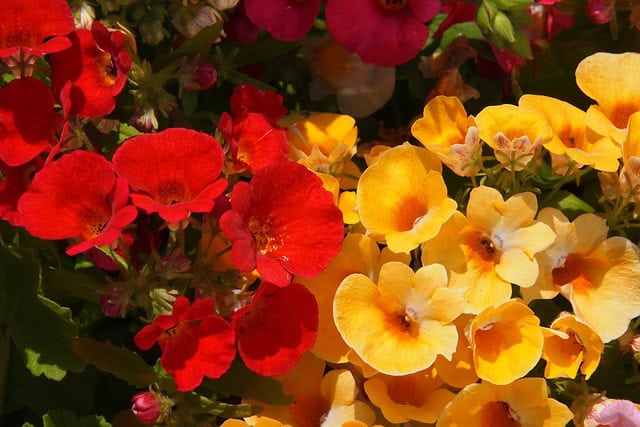
Nemesia is an often-overlooked annual that offers a delightful explosion of color in shady areas. Their charming, fragrant blossoms come in a variety of colors, including yellow, blue, and pink, naturally attracting pollinators to your garden. Although these plants prefer cooler temperatures, they can thrive in partial shade, especially during hotter months.
To keep nemesia blooming throughout the season, provide regular moisture and well-drained soil. They appreciate a bit of feeding every few weeks to support abundant flowering. Low-growing and bushy, these plants create an eye-catching display and work particularly well in containers or along borders in your shade garden.
Balsam
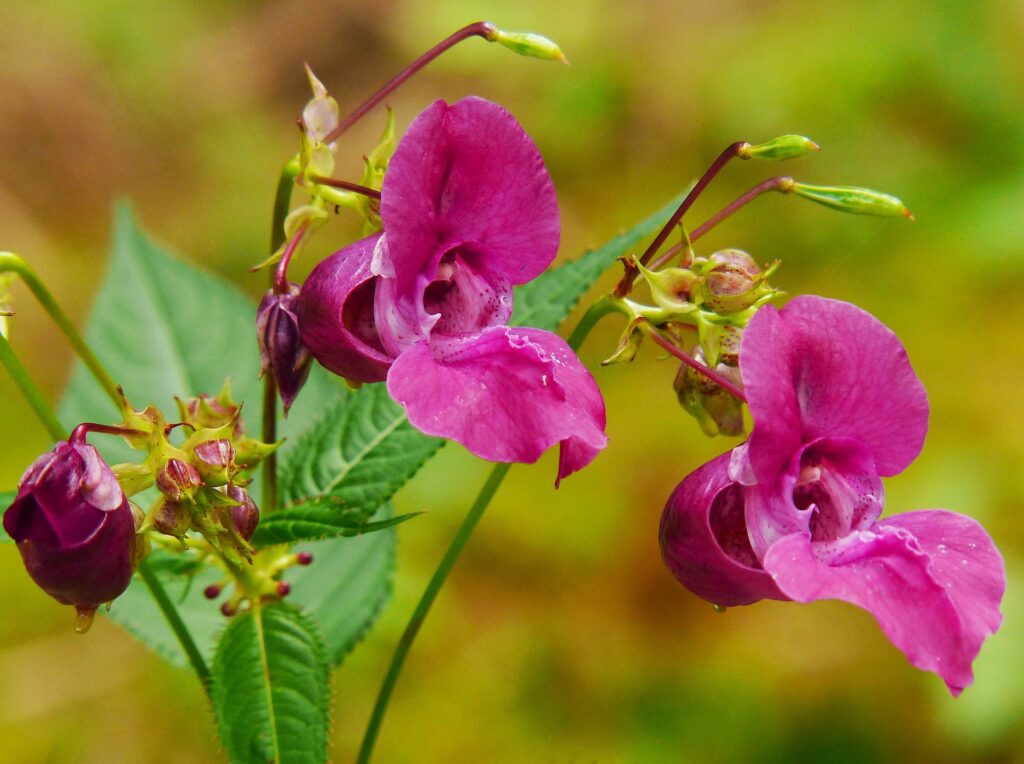
Balsam (Impatiens balsamina) is an often-forgotten beauty that deserves a spot in every shade garden. With a bushy appearance and vibrant flowers available in shades of pink, white, and red, it adds superb color where many other annuals fade. Balsams thrive in partial shade, making them perfect for those darker corners of your garden.
These flowers prefer moist, well-drained soil and benefit from consistent watering, especially during dry spells. They bloom from early summer to fall and are an excellent choice for borders, containers, or even as a backdrop for taller plants. Their soft blooms create a nostalgic charm, making them a beautiful addition to any shaded area.
Sweet Alyssum
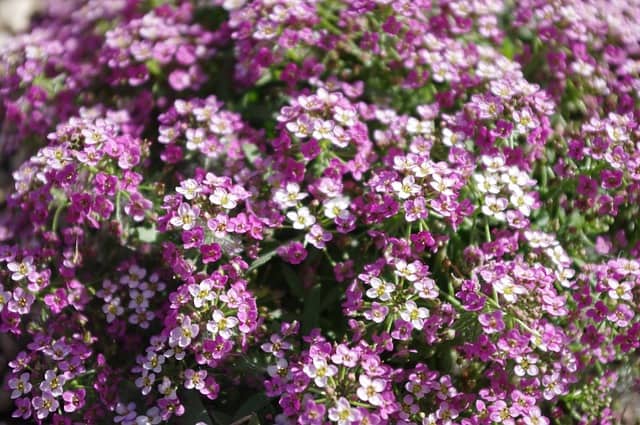
Rounding out our exploration of shade garden annuals is Sweet Alyssum (Lobularia maritima), known for its delicate, sweet-scented white, purple, or pink flowers. Sweet Alyssum thrives in part shade and is perfect for adding a ground-covering effect, filling in gaps among taller plants or edging walkways.
This annual is remarkably easy to grow and care for. Sweet Alyssum prefers well-drained soil and consistent moisture, making it suited for shaded areas where other flowers may struggle. Regular deadheading promotes continuous blooming and richer colors, ensuring that your shaded garden remains a delight through the growing season. Plus, its fragrance is sure to create a welcoming atmosphere in any outdoor space.


